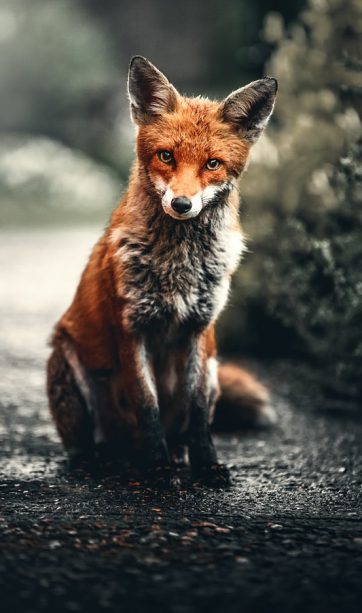
Guest piece by eco-poet and Hawkwood tutor, Helen Moore
What is ‘wild writing’ and how is it ‘co-creative’?
I understand ‘wild writing’ as part of my own ecopoetic practice, stemming primarily from a desire to respond to the social and ecological crises that we collectively face by building a relationship with other-than-human Nature. I believe wild writing builds resilience and wellbeing and encourages an ‘untaming’ of its practitioners, allowing us to get in touch with our ‘humanimal’ nature and offering us the opportunity to develop the ‘deep ecological self’ advocated by the Norwegian ecophilospher Arne Naess.
I’ll begin by sharing a piece of my own wild writing, inspired by foraging for Wild Garlic in Springtime and the phenomenon I’ve named ‘green drift’, which is the subtle imprint that time in green spaces can endow us with.
Green Drift
“There is no force in the world but love.” – Rilke
Crawling into bed like a peasant,
with mud-grained feet, soil under the nails
of my toes – but too tired to care –
the heaviness of the day’s exertions draws
my body downward – each muscle and bone
finding its bliss – and I close my eyes
on a green panorama, shades of every
nuance, the contours of leaves in high
definition. A film encoded on the visual cortex,
I observe again those lanceolate shapes, the forage silk
which slipped between our fingers and thumbs
(still redolent with that Ramson scent),
the mounding herbage that we plucked,
backs bent as in a Van Gogh study.
Behind my eyelids, vernal waves rise and fall,
hymn of this community to which my senses flock –
ancient rite of magnetic birds, Dionysus riding me,
greens rushing on the inside of my eyelids,
mosaics of foliage, fingers ablaze with Nettle stings,
soles still alive to the narrow woodland path,
its vertebrae of roots, pad of compressed earth.
High on Spring, I’m a biophile
and incurable; nor would I care for any cure –
would only be a node in Great Mother’s body
where, drifting into the canopy of sleep, I see foliar veins
close-up – illumined as if by angels –
feel the breathing of stomata. Then, like a drunken Bee,
I surrender to this divine inebriation.
From Hedge Fund, And Other Living Margins, Helen Moore (Shearsman Books, 2012).
How can we practice wild writing?
Given that it’s a practice emerging from the wilder aspects of our consciousness, there is a strong need to carve out space in our busy schedules/timetables to get away from the digital world to nourish our creativity and deepen our connection with other-than-human Nature. But we don’t need to seek out places that might typically be defined as ‘wild’. The wild is everywhere, even in our local park/garden/school playing fields/cracks in the pavement.
It’s also about holding an intention, what does life want to show me today? In approaching it this way, we can experience magical encounters that lift our spirits/bring joy/inspire. It’s important to see the time we give it as ‘sacred’; time for nurturing soul and the ensouled world, and ideally, we cross a threshold (which might be a garden or park gate, a path to a beach or forest) in order to mark the transition into it. Whilst in this space, we avoid conversations with other humans and open ourselves to the other-than-human world.
We begin by walking, slowing our pace, letting our mental chatter subside in order to open ourselves. We let our bodies soften, our senses receive information such as the breeze on our skin, scents in the air, taste, sounds near and far, and visual aspects such as colours, shapes, patterns. At the same time, we watch what is at the edge of our consciousness, breathing it in and out, honouring any uncomfortable feelings, breathing them in and out. We avoid getting attached to any of those thoughts, or letting ourselves build them into narratives, and instead keep returning our attention to the present moment.
In wild writing we practise the Five Ways of Knowing, which Bill Plotkin advocates in Soulcraft (New World Library, 2003). These are sensing (with all five senses), feeling, intuiting, imagining and thinking. Valuing these additional ways of knowing helps to balance out the dominant rational mind and allows us to become more receptive to the multiple wild voices and natural sign languages that are usually so ignored in our culture – in fact, the American ecopsychologist, Theodore Roszak, talks about us having become deaf and mute towards the other-than-human world (The Voice of the Earth, Phanes Press, 2001).
And we connect with the elements, the weather, darkness/light, rhythms of growth, abundance and decay, and notice what these may mirror within us. Observing dead wood riddled with insect holes and fungus, we may see what needs to fall from our own lives, what needs to be composted, as we embrace a deeper understanding of impermanence.
Through these acts of paying deep attention, and then finding language, imagery and form to reflect our experiences, we are engaging in wild writing. However, that process of finding language is often tentative, provisional. Our experiences may be difficult to communicate, and so we simply ‘splurge’, forgetting grammar, spelling, punctuation. Sometimes the seed of a poem or story is found later in just a few words of that splurge, a phrase that has a certain ‘energy’ that we want to explore further.
Wild writing fundamentally requires us to practise non-judgement – at least in the initial phase, when we allow everything in. Later we can practise the discernment of the editorial eye, but initially we are open to including all of our experience. Which connects us with the co-creative aspect of my wild writing methodology.
What is co-creation?
In our culture we’re conditioned to think of the act of creation as happening almost in a vacuum. We’ve come to think of the creative ‘genius’ working in isolation – traditionally a white, male figure, possibly inspired by a female muse. However, everything happens as a co-creation in Nature. A tree does not grow on its own, but responds to light, soil, water, weather, insects. It interacts with other trees through mycorrhizal relationships. Trees are also home to birds, creatures, insects, all of whom may have a symbiotic relationship with the tree. A bird might find its home in the tree’s branches, eat its berries, benefitting from this food source, and then pooping out the seeds, thereby disseminating them.
This shows that co-creation is at the heart of all experience. All beings are infinitely connected through the web of life, the ecosystems and communities we inhabit. Our co-creation as humans is with other writers and teachers who inspire us, and with the other-than-human as an interspecies experience. It may also involve consciously working with the Universe, the Divine, Spirit, Oneness, however we may call it.
This co-creation can come about through inspiration, and of course the word ‘inspire’ connects us with the breath, the air we share with all beings. It is the insights, ideas, sudden intuitions which we ‘breathe in’. And which we then ‘breathe into’ others when we inspire them.
How can wild writing help our wellbeing?
In my experience, regularly practising wild writing can help us become more attuned to our wild selves, more capable of expressing this essential aspect of who we are. This builds our resilience to face the challenges of being human in the 21st century, to embrace the crises we face as opportunities to heal ourselves and transform our world. It also helps us to understand that we’re never alone – even when we’re socially isolated, wild beings can become wonderful companions and teachers. And Nature has so much to teach us, no matter our age. I’ll finish with a poem inspired by my work as a Forest School leader over ten years.
A Natural Curriculum
“Let Nature be your teacher.” – William Wordsworth
I am child-free, but have a dozen children
who come to me for help, comfort –
a soft-skinned hand in mine, unshaped
by experience, yet eager to feel, to learn;
that three-hundred-year-old Beech standing taller
than a church – what history has it witnessed?
Holding a lens, a child sees
the slant, black eyes and furry legs
of a Honeybee, whose waggle-dance
we’ve been learning to mimic.
Released from the boxed-in logic of classrooms
we open to the gifts and surprises
of landscape, seasons, weather – wild November gusts
that send us wheeling like Buzzards;
fruiting-bodies wearing butter-yellow caps
and us, dentist-like with mirrors, inspecting gills
white as teeth; or we find a fleshy Earthworm
probing leaf-litter like a peeled finger – Worm, our top
recycler, who teaches zero waste in Nature.
Outdoors, we encounter words, patterns, numbers,
infinite lessons in care, symbiosis.
Hedges constitute our school, each wood
a state-of-the-earth project – that fallen trunk
the perfect beam for learning balance.
With twigs we build skeletons
as anatomically correct as each maker’s age
or interest can manage. Older children become bigger
brothers, sisters – together we form a tribe
skilled at foraging, fire-craft, cooking up stories.
Leadership comes in praise, listening,
boundaries. Amidst these saplings I too am learning
to grow towards the light
From ECOZOA, Helen Moore, (Permanent Publications, 2015).
Note: Names of other-than-human beings are capitalised in my work to raise their status from the margins to which industrialised culture has relegated them.

Helen Moore is a British ecopoet, socially engaged artist, writer and Nature educator. She has published three ecopoetry collections, Hedge Fund, And Other Living Margins (Shearsman Books, 2012), ECOZOA (Permanent Publications, 2015), acclaimed by John Kinsella as ‘a milestone in the jourey of ecopoetics’, and The Mother Country (Awen Publications, 2019) exploring aspects of British colonial history. Helen offers an online mentoring programme, Wild Ways to Writing, and works with students internationally. In 2020 her work was nominated for the Forward and Pushcart Prizes and received grants from the Royal Literary Fund and Arts Council England. She’s currently collaborating with Cape Farewell in Dorset on RiverRun, a project working with scientists and farmers in Dorset to examine pollution in Poole Bay and its river-systems

